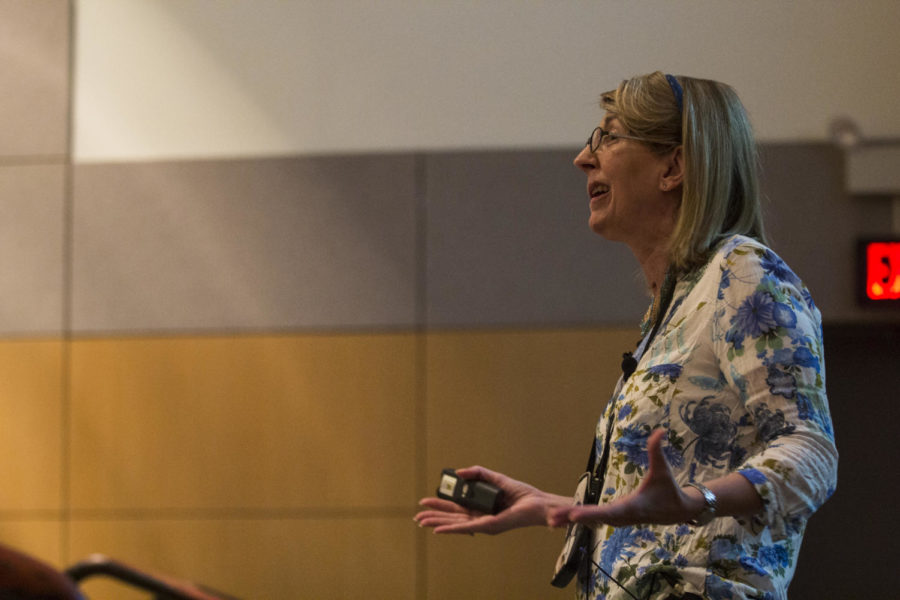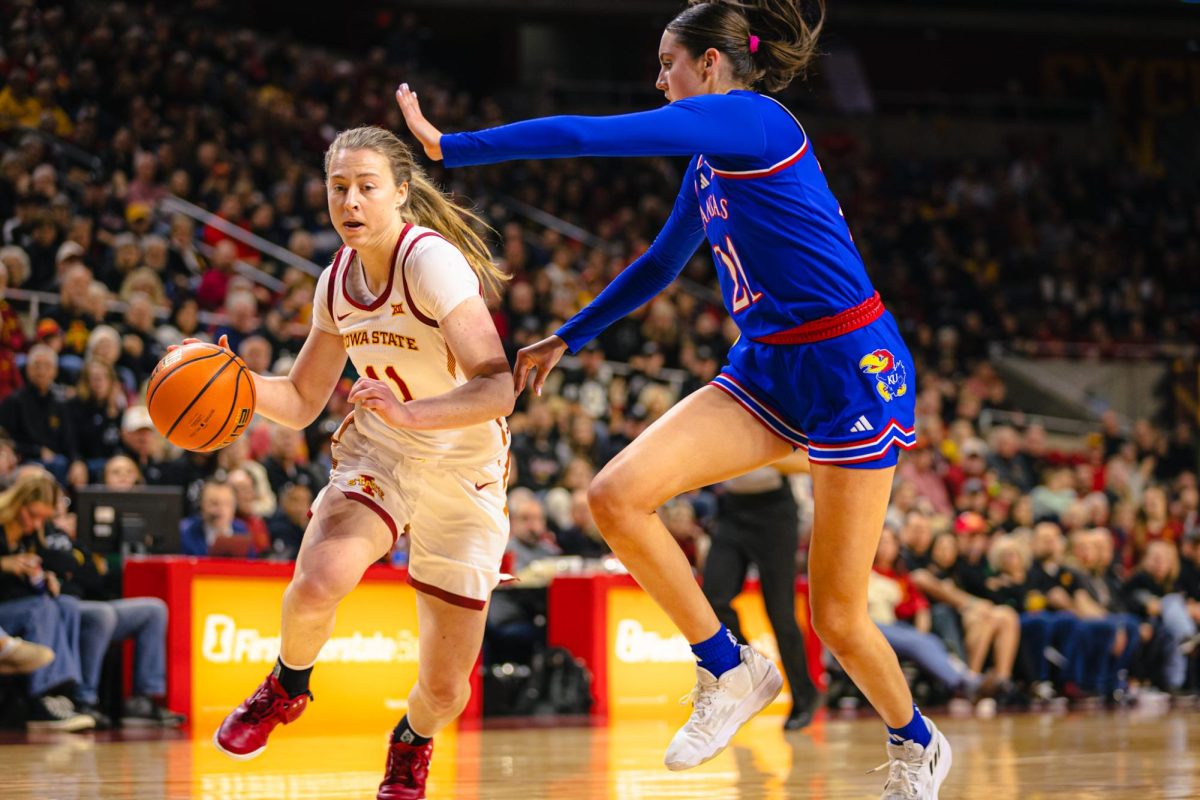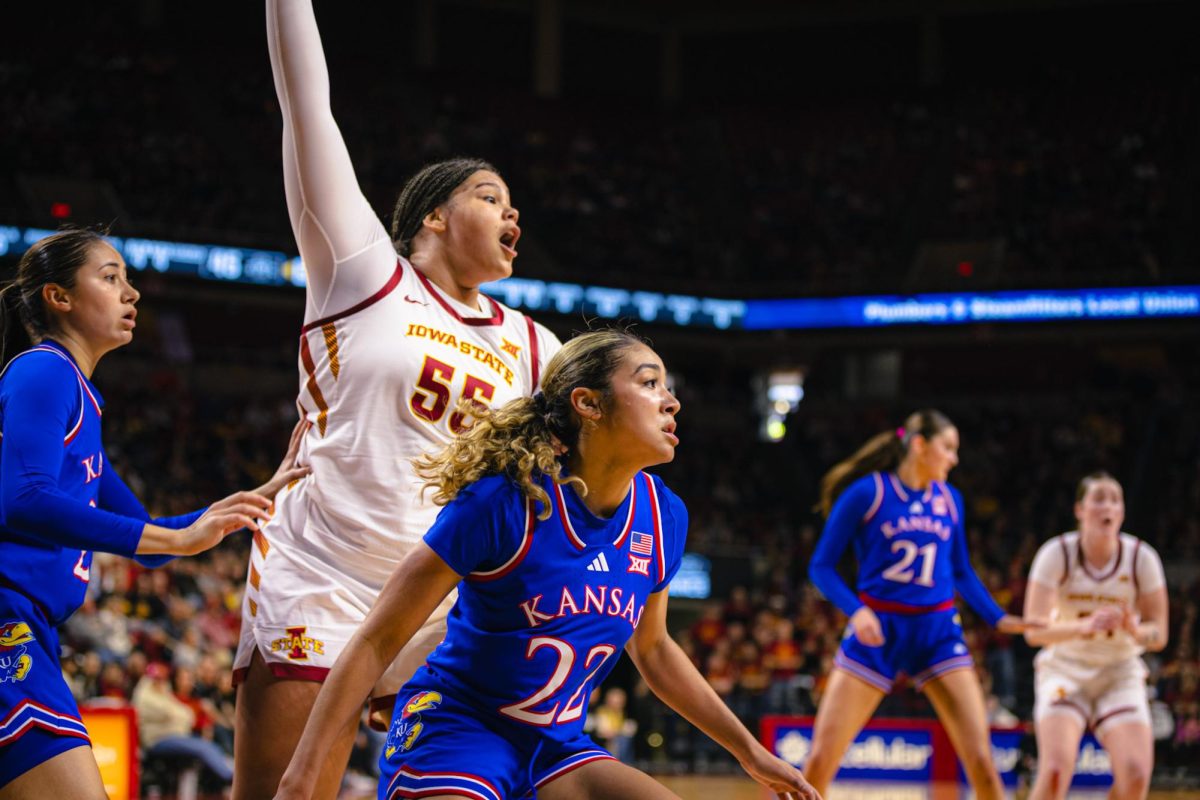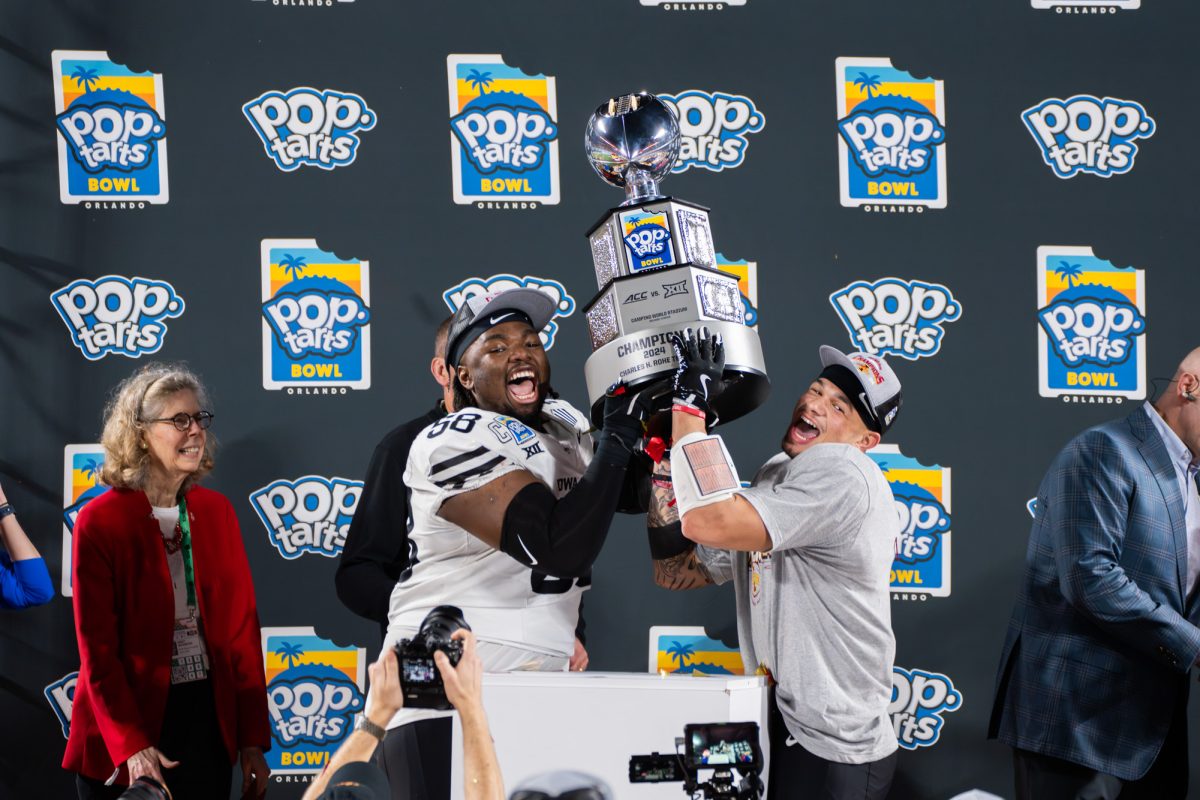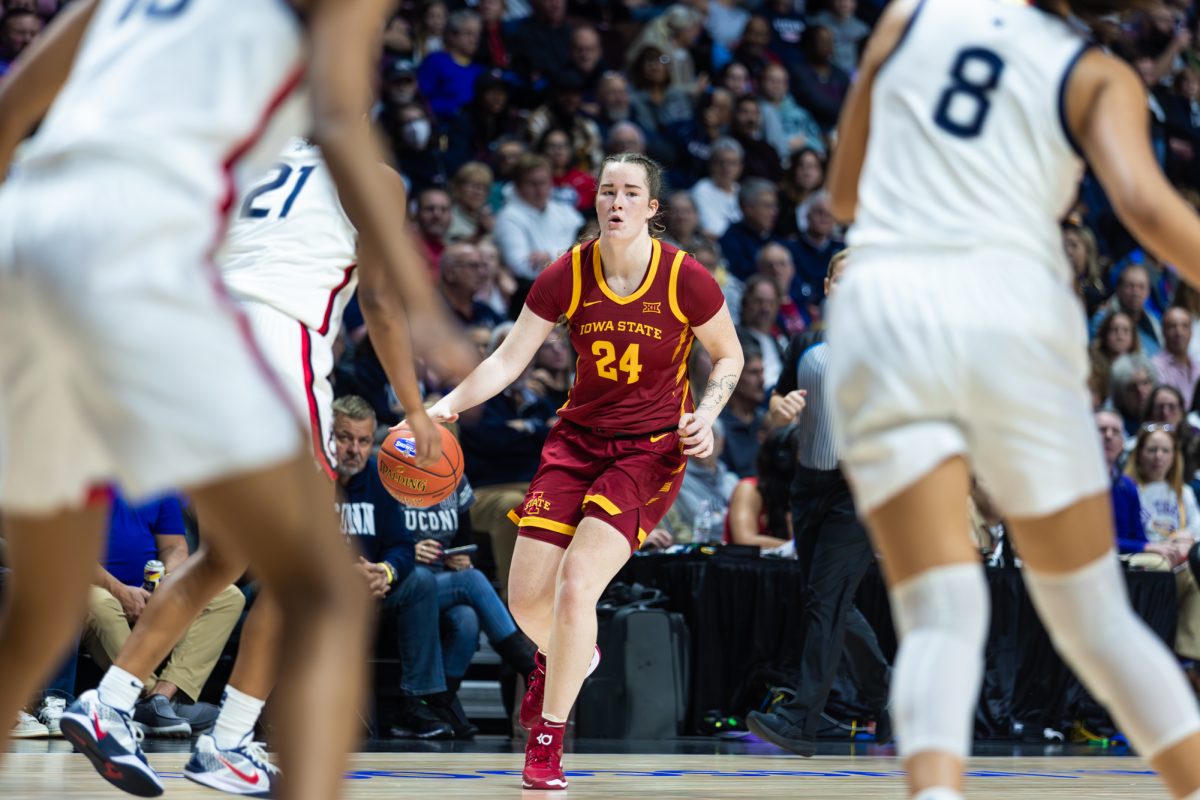The first day back: ISU professor returns to class after suffering from severe stroke
Kelby Wingert/Iowa State Daily
Cinzia Cervato, Morrill Professor of geological and atmospheric sciences, is back teaching Geology 100 after months of physical therapy to recover from a severe stroke she suffered Dec. 20, 2013.
August 27, 2014
The morning of Dec. 20, 2013, may have been dreary and drab outdoors, but most ISU students, faculty and staff were in high spirits. It was a Friday, it was the last day of finals testing for the semester and holiday fun with friends and family was set to begin in just a few short hours.
For Cinzia Cervato and her family, those dreams of Christmas fun quickly turned into a holiday nightmare.
An icy morning
The Italian-born Cervato is a creature of habit. She began the day just as she had begun thousands of others in her 12 years at Iowa State. She awoke at 5:30 a.m. By 6:45, she had traveled the icy roads to and from the gym and was ready to take her 15-year-old daughter Francesca to school.
Upon returning home, she took a shower and prepared for work. When she was ready to leave, Cervato’s 7-year-old son Ian was still upstairs getting ready to catch his bus.
“Just as I was leaving my house, I thought, ‘You know, I didn’t give him a kiss,'” Cervato said. “But then I thought, ‘Well, it’s OK because I’ll see him later.'”
The slick roads slowed the commute, but Cervato, a Morrill Professor of geological and atmospheric sciences, arrived on campus safely and parked in her normal spot. When she exited her car, a strange feeling came over her.
“When I started walking, I realized I was much more conscious of my movements than I’d been before,” she said. “But I thought maybe it was because the ground was icy.”
Cervato reached the intersection of Pammel Drive and Winlock Road under her own power, but she realized something was not right.
“All of a sudden I thought, ‘If I’m going to cross this road I could fall in the middle of the road and could be run over,'” Cervato said. “I thought, ‘This is insane. I don’t feel any pain. I don’t feel anything wrong. Why should I fall?'”
Cervato had yet to realize that she was in the early stages of a massive stroke.
I need your help
She saw a woman approaching the same intersection and decided to ask for help across the road.
Tammy Blakeley, secretary in the College of Liberal Arts and Sciences, was on her way to work as well. She had seen Cervato before, as they often walked similar routes from their parking spots to their offices, but they had never spoken.
“She just said, ‘I need your help,'” Blakeley said. “I don’t think [she] or I knew what was happening at the time. So I just held her hand and we walked carefully across the street.”
Blakeley said it was obvious that Cervato needed to sit down and couldn’t make it to her office in Science I. She suggested they go into Science II to take a break. As they shuffled into the building, things took a turn for the worse.
“I felt something very painful behind my ear and I felt liquid coming from my eye and I thought it was blood,” Cervato said. “I said, ‘What’s wrong with my eye?’ She looked at me puzzled and sat me down on the stairs.”
Cervato says when she sat down, her “head exploded.”
“It was like fireworks going off inside my head,” she said. “I couldn’t see anything anymore, so I started shouting ‘Call 911!'”
37 seconds
Suddenly, Cervato realized she could barely speak and couldn’t see out of her right eye. Her body seemed almost completely out of her control. She was immediately panicked because she doesn’t share a last name with her husband Paul Spry, fellow professor of geological and atmospheric sciences. Who would alert her husband?
Using what coordination remained, Cervato managed to call her husband herself, a call that lasted 37 seconds — a call that she thought might be her last chance to speak with her family.
“I felt like I was dying,” she said. “Everything is getting bright and I’m praying, ‘God, my kids — I didn’t kiss them goodbye.'”
In the beginning
Cervato was born in March 1961 in Padua, Italy. Her father was a physician and her mother stayed at home to care for her and her younger brother. She found a love of science at a young age. She chose geology for specific reasons.
“I always knew I was going into the sciences,” Cervato said. “I’m a bit squeamish so I didn’t want to dissect a frog. Geology seemed a little safer to me.”
She studied geology at the University of Padua in Italy and earned her Ph.D. at the Swiss Federal Institute of Technology in Zurich. After some time teaching at the institute and the University of Maine as well as a short stint doing lab work in the private sector in Europe, Cervato decided to return to the classroom and wanted to move to America.
“I realized that I really missed working with students and I applied for faculty positions here in the United States,” she said. “I figured out that this was really my calling.”
Bill Gallus, professor of geological and atmospheric sciences, met Cervato shortly before her arrival at Iowa State in 2001. They’ve been friends and worked together ever since. Gallus and his wife invited Cervato to their home when she first arrived.
“The very first time we had her over to our house I was amazed,” Gallus said. “I think she’s fluent in seven languages and passable in a couple more.”
Gallus and Cervato became quick friends. They have collaborated on research projects since her arrival. Gallus had an opportunity to bring a little bit of home back to Cervato last year when his family hosted an Italian exchange student named Enzio.
“We arranged for Enzio to meet Cinzia,” Gallus said. “Cinzia was an incredible cook and Enzio thought she was the sweetest and smartest woman he had ever met.”
Into the dark
“I was shocked,” Gallus said. “It was really hard. We didn’t know how bad it was.”
When the paramedics arrived, Cervato was in pain and in deep trouble. She had suffered a hemorrhagic stroke. Only 12 to 13 percent of stroke victims suffer from a hemorrhage, which essentially means the stroke is caused by bleeding in the brain. Ischemic strokes, which are caused by a blood clot, are much more common and less deadly.
Cervato says she was conscious of everything that was going on. Being a scientist and the daughter of a physician, Cervato recognized she was having a stroke. The people trying to help were not yet sure.
“I was afraid of becoming paralyzed,” she said. “So I kept moving my legs and arms. I’m trying to explain to them that I’m having a stroke, but my speech is impaired.”
By now, Cervato felt like she was dying. The tunnel of a hallway was getting darker and darker.
“I’m terrified to go down that tunnel,” she said. “I’m thinking of my kids and how I’m not going to see them again. I don’t want to go down that tunnel.”
No one will ever know if there was a medical explanation, if it was God or if it was sheer willpower, but gradually a light began to brighten for Cervato.
“All of a sudden I feel a light on the left and I kind of turned towards this light,” she said. “There’s this tunnel, and there’s this light. The light gets brighter and brighter and is a warm tone. As a scientist I’m thinking, ‘That’s not a window.'”
As the paramedics fought to save Cervato’s life, Cervato was fighting right alongside of them. Fighting to get to the light.
“[The light] is way too big and the light is warm, but it’s cold and cloudy outside,” she said. “I’m looking at the light and I can hear the ambulance. I’m saying, ‘I’m going to make it, I’m going to make it.'”
A glamorous patient
Cervato was rushed to Mary Greeley Medical Center, where they confirmed she had a hemorrhagic stroke. MGMC was ill-equipped to handle the situation and rushed her by ambulance to Mercy Medical Center in Des Moines.
When she awoke, she was being intubated. Her family was there, but she couldn’t see them. She was blind in her right eye and was restrained from moving. That didn’t mean she didn’t recognize her family in the room.
“My daughter, I didn’t see,” she said. “I felt her. She held my hand and said, ‘Mom, your lipstick held beautifully.’ That’s my girl, what a spirit.”
Francesca did her best to keep the mood light in what was a very serious situation.
“Mom, you’re the most glamourous patient they’ve seen in this emergency room,” Francesca said, according to Cervato.
After six weeks in the hospital, Cervato still faced months of physical, occupational and speech therapy.
She got through it the same way she’s gotten through the other challenges in her life — with hard work. She still spends three hours a day working on her speech therapy.
The pillar of modesty, she pushes credit for her recovery on others. Cervato has had 24 doctors since her stroke and countless nurses, but it’s everyday people who have helped the most with tasks.
“I’m very blessed,” said Cervato. “I have Team Cinzia. Thirty-seven people organized to bring food to my family, drive me to therapy, the doctor and take care of my kids.”
Bill Simpkins, professor and chairman of geological and atmospheric sciences, has known Cervato for 13 years and credits her perseverance and hard-nosed attitude for her speedy recovery. He says she hasn’t really changed much since the stroke.
“The same Cinzia is still here,” Simpkins said. “She has a very strong drive to excel and I think that drive has helped her work through some of the challenges she has faced.”
Gallus echoes Simpkins’ sentiment.
“She is a very driven, type-A person that doesn’t let anything stop her,” Gallus said. “She has proven that through this whole process.”
The first day
On Aug. 25 — eight months and five days after her stroke — Cervato walked calmly into Coover 2245 and watched as more than 200 students filed in, ready to learn about geology.
It was her first class back and behind the calm demeanor, glimpses of nervousness, determination and excitement could be detected.
Class began with a brief explanation of her condition, followed by something that fits her well.
“With persistence you can achieve anything,” she said.
The class applauded loudly, and it finally looked like Cervato could exhale.


